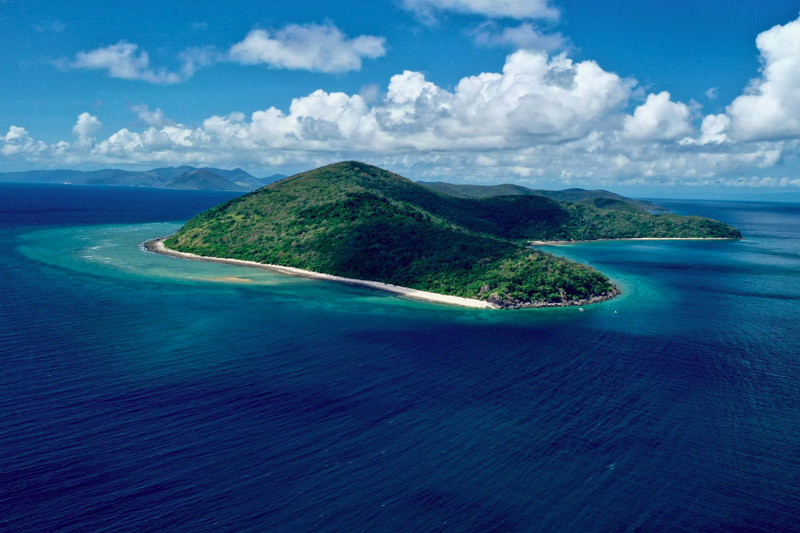Great Barrier Reef
Whitsundays, Australia

PROJECT #3
Location: Great Barrier Reef Australia
Habitat Type: Coral reef
Key Species: Stony corals, parrotfish, butterflyfish, coral trout, white-tipped shark
Number of Corals: 1,500
Project Focus: Reef restoration

Why is this habitat under threat?
Coral reefs harbour the greatest biodiversity of any ecosystem, but it is estimated that one third of reef-building corals are under threat of extinction, mainly due to bleaching events. Bleaching happens when stressed corals expel the microscopic algae that live in their tissues, and is commonly linked to rising sea temperatures. Repeated bleaching events can kill the coral, and the Great Barrier Reef lost 50% of its corals in 2016 and 2017, which was exacerbated by Cyclone Debbie. Storm damage can take 10 to 15 years to recover naturally, but aiding the regeneration process can accelerate the habitat restoration and improve the resiliency of the reef to further damage.
Which species will benefit from the habitat restoration?
The stony corals that are transplanted will populate the reef and provide new habitat for a range of fish including parrotfish, butterflyfish and white-tipped reef sharks.

Site history
The Whitsundays is a group of islands situated between the coast of Queensland and the Great Barrier Reef, and is a very popular tourist destination for people visiting the reef. In 2017 the Whitsundays area was hit by Cyclone Debbie, which caused devastation to the reef.
Reef Ecologic implemented a coral regeneration programme, using nurseries to propagate coral and then outplanting back on to the reef.

Habitat restoration details
The Whitsundays site is one of the areas where coral regeneration techniques are being tested. Fragments of broken coral are taken from existing reefs and transported into nurseries, grown either on ropes or attached to disks suspended in the water, where the small corals grow quickly. They are then transplanted back on to the old reef surface and cemented in position.
The transplanted corals have an average survival rate of 72% and are carefully monitored to assess their progress. The outplanted corals expand quickly and many are making their own attachment to the rock, which is a key stage in their development. The regenerated coral will build into a beautiful, diverse reef once again.


Outreach projects
One of the most important aspects of the Whitsundays project is that it is a collaboration between scientists, tourism operators, and local people to restore the reef and protect their livelihood.
Prior to the corals being outplanted an underwater sculpture trail was set up to encourage divers to visit the area. Divers have also been encouraged to get involved directly in planting out the corals, engaging them in the habitat restoration and educating them on the ecosystem that they visit.
For all general enquiries, please contact us at
Phone: 01258 818003 Email: hello@tomorrowsforest.com


BioToken

